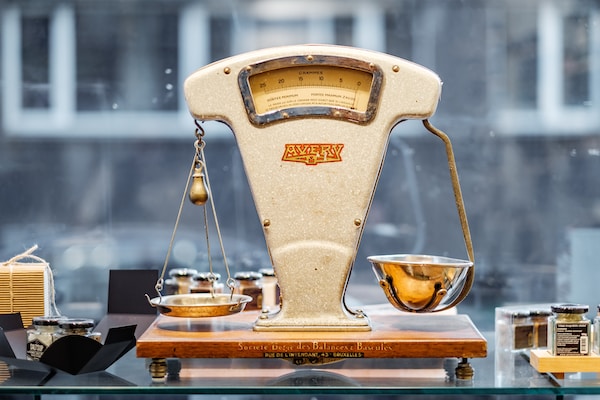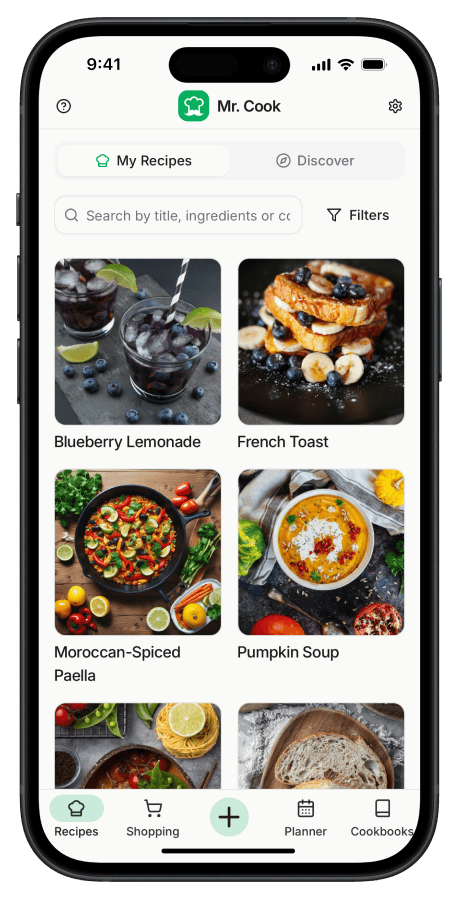
Efficiently Measuring Cooking Ingredients: Tips for Home Cooks
- 6 minutes reading time
Cooking is a delightful art that allows us to express our creativity and satisfy our taste buds. Whether you are a beginner or a seasoned chef, one common factor for successful recipes is the accurate measurement of cooking ingredients. In this blog post, we will explore various techniques and tips to measure cooking ingredients efficiently, ensuring that every dish turns out delicious. So, let's dive in!
Importance of Measuring Ingredients
Cooking is a delicate balance of flavors, and accurate measurements can significantly impact the outcome of a recipe. Properly measuring cooking ingredients is essential for achieving the right taste, texture, and consistency in dishes. Here's why it's worth paying attention to the art of ingredient measurement:
- Consistency: When you measure ingredients correctly each time, your recipes will consistently turn out delicious. This is particularly important if you're a home cook who enjoys recreating favorite family recipes or experimenting with new ones.
- Balance of Flavors: Ingredients like salt, spices, and herbs can make or break a recipe. Precise measurements ensure that the flavors are perfectly balanced, creating a harmonious taste experience.
- Texture and Consistency: Proper measurements help achieve the desired texture and consistency. Whether you're baking a cake or making a sauce, the right measurements ensure the final product is exactly how it should be.
Essential Tools for Measuring Cooking Ingredients
Before we delve into the techniques, let's start with the essential tools you'll need to measure cooking ingredients efficiently. With the following tools on hand, you'll be well-equipped to embark on your culinary adventures:
- Measuring Cups: Use a set of measuring cups with both metric and imperial measurements. These come in various sizes, allowing you to measure both liquid and dry ingredients accurately.
- Measuring Spoons: Similar to measuring cups, a set of measuring spoons ensures precise measurements for smaller amounts of ingredients like spices, baking powder, or vanilla extract.
- Kitchen Scale: A kitchen scale is a valuable tool, especially when it comes to baking. Measuring ingredients by weight provides the most accurate results, particularly for flour, sugar, and other dry ingredients.
Techniques for Measuring Cooking Ingredients
Now that we have our tools ready, let's explore different techniques to measure cooking ingredients efficiently:
1. Using Measuring Cups for Dry Ingredients
When measuring dry ingredients like flour or sugar, spoon them gently into the measuring cup or spoon until slightly overflowing, and level off the excess with a knife. Avoid packing the ingredients, as it can lead to inaccurate measurements.
2. Measuring Liquids
To measure liquids accurately, place your measuring cup on a flat surface, pour the liquid, and bend down to check the measurement at eye level. Be sure to read the measurement at the bottom of the meniscus, which is the curved surface of the liquid.
3. Measuring by Weight
For ultimate precision, especially in baking, measuring ingredients by weight is highly recommended. Use a kitchen scale to measure dry ingredients like flour, sugar, or nuts. Place your bowl on the scale, press the tare button to zero it, and then add the desired amount of ingredients.
4. Spooning & Leveling
When measuring small amounts of ingredients like baking powder or salt, use measuring spoons. Dip the spoon into the ingredient, level it off with the back of a knife or a straight edge, and add it to your recipe.
5. Sifting
When a recipe calls for sifted dry ingredients, it's important to measure the ingredients after sifting. Sift the flour or other dry ingredients into a measuring cup and level off any excess.
6. Proper Knife Techniques
Knife techniques play a vital role when it comes to efficiently measuring ingredients. Learn how to chop, mince, dice, and slice properly to achieve consistently accurate measurements.
Additional Tips for Efficient Ingredient Measurement
Here are some additional tips to help you measure cooking ingredients efficiently and avoid common mistakes:
- Read the Recipe: Before you begin, read the entire recipe, including the ingredient list, to ensure you have all the necessary tools and ingredients.
- Use Clear Measuring Cups: Opt for measuring cups with clear markings to minimize errors.
- Level Off Dry Ingredients: Level off dry ingredients with a flat edge (like a knife) to ensure accurate measurements.
- Mind the Meniscus: When measuring liquids, always read at eye level and check the measurement at the bottom of the meniscus.
- Be Careful with Sticky Ingredients: When measuring sticky ingredients like honey or syrup, coat your measuring spoon or cup with a bit of oil or nonstick spray to ensure easy release.
- Clean and Dry Tools: Make sure your measuring cups and spoons are clean and dry before dipping them into different ingredients.
Conclusion
Efficiently measuring cooking ingredients is a fundamental skill that every home cook and aspiring chef should master. By following the techniques and tips outlined in this blog post, you'll be well on your way to creating culinary delights with consistent results. Remember, precision is key, and practice makes perfect. So, start measuring those ingredients with confidence and enjoy a delicious cooking journey. Happy cooking!
All your recipes in one app.
Organize all your recipes now with the best recipe management app. What are you waiting for?

